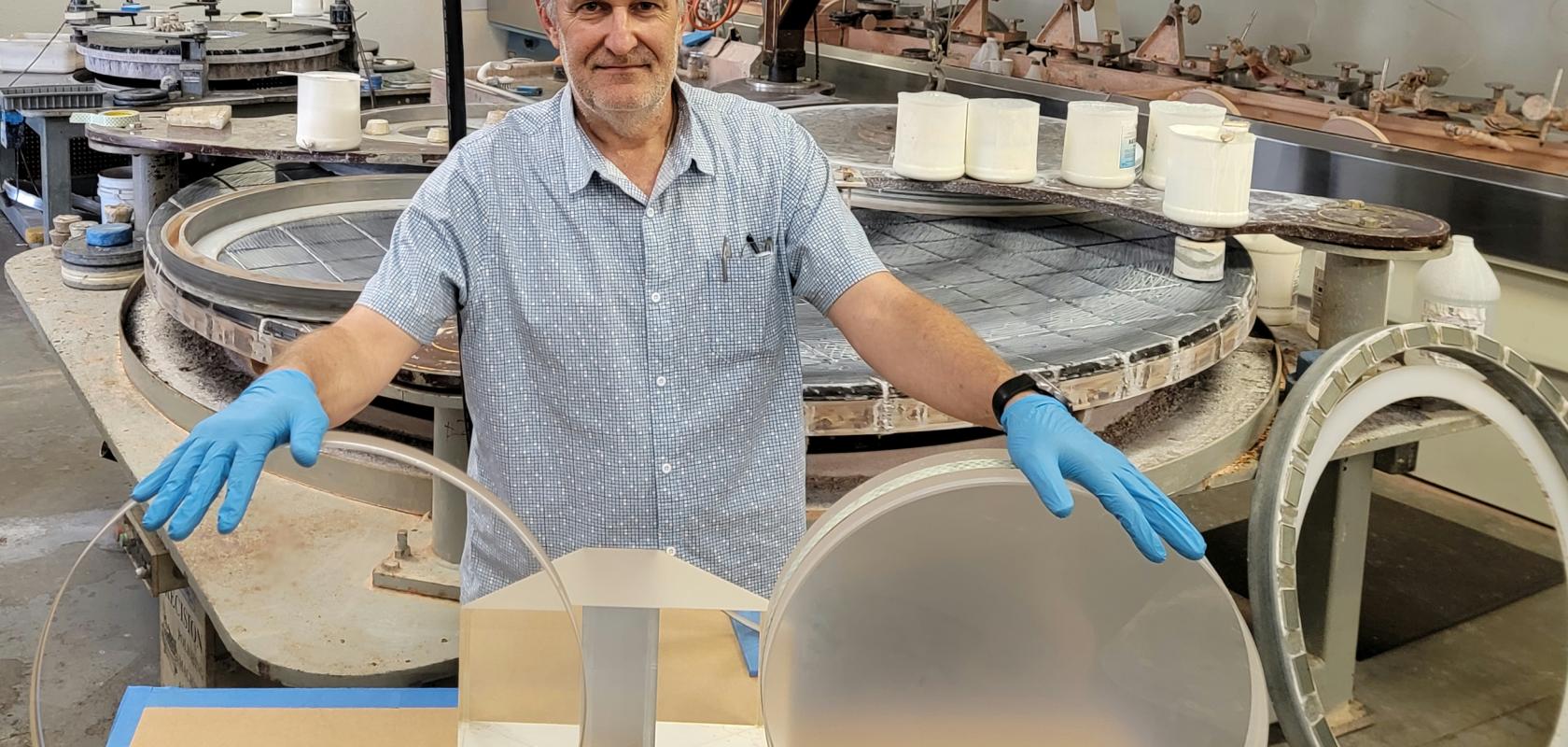In my 40 years of experience in manufacturing optics, I have never seen such challenging times as those brought on by the global pandemic.
The impact of the pandemic on the industry has been far-reaching, including a global shortage of optical materials. This has presented significant challenges for optics manufacturers and has highlighted the importance of being flexible and open-minded when it comes to material selection.
One situation that illustrates this challenge occurred when a customer recently requested a large, fused silica window, and the material specified on the drawing was Corning 7980. We are accustomed to lead times of 6, 8 or even 10 weeks, so when we contacted Corning for a quote, we were told that lead time was "to be determined".
This left us in a difficult position, as we couldn't provide a definitive lead time to our customer.
To address this issue, we engaged in a discussion with our customer about alternative materials. We provided them with specifications on various options, and they eventually agreed to switch to an alternative material. This example demonstrates the rigid approach photonics engineers have typically had when choosing materials that has been prevalent in the industry for decades.
For years they have relied on the same materials, such as Corning 7980, without considering alternative options. While this approach has worked in the past, it has become a hindrance in the face of the recent fused silica shortage. The reliance on a single material is problematic, as it creates a situation where there are few options when that material becomes unavailable. This can lead to delivery problems, increased costs, and longer lead times, which can be frustrating for both manufacturers and customers.
Consider the alternatives
The good news is that there are alternative materials available that can be used in place of popular choices such as 7980. For example, Ohara SK1300, Nikon NIFS, Tosoh ESL, JGS1, and Heraeus offer a full line of materials, all of which have interchangeable optical properties to 7980. Another material to consider is Schott Borofloat, which has many of the same optical properties as fused silica and is already polished and comes in a wide variety of thicknesses and sizes, at a price that is considerably lower and readily available. This same approach can apply to all optical materials, as there are equivalent materials to just about every type of optical glass.
However, in order to fully utilise these alternative materials, photonics engineers need to be more flexible and open-minded in their approach to material selection. This means considering a wider range of options and being willing to try new materials that have the potential to improve performance, reduce costs, and increase efficiency.
Along these lines, there needs to be a team approach to optical design. Material companies need to be working more closely with the photonics engineers to enable them to understand the full range of materials available and which materials work best for certain applications. Engineers know what they need the optic to do and what specifications they need to achieve this, while the manufacturer knows both the materials and all the engineering that it takes to produce an optic.
What would help this whole process immensely is if the engineers were clear from the start that they are willing to consider alternative materials in the specification they provide to the manufacturer. As hinted at in the title of this article, simply putting the phrase “or equivalent” next to their first choice of material in the specifications – e.g. “Corning 7980, or equivalent” – when initially looking for a quote would indicate clearly to the optics manufacturer that the customer is open to flexibility. This would increase simplicity dramatically and enable us to more easily develop that unique working relationship we look for with our customers, which enables us to provide them with a solution that works at a great price point and with desirable delivery times.
Embracing flexibility
The recent shortage of fused silica has highlighted the need for change in the optical manufacturing industry. Photonics engineers must therefore be more flexible and open-minded in their approach to material selection and be willing to consider alternative options. Most importantly, this openness to flexibility must be communicated in the initial specifications given to the optics manufacturer, enabling all options to be considered as soon as possible in product development.
In conclusion, by considering and embracing new materials while being open to change, photonics engineers can mitigate the impact of future shortages, reduce costs, and improve the delivery times of their optics. In doing this, the photonics industry can continue to evolve and thrive in the future.


